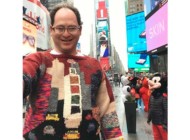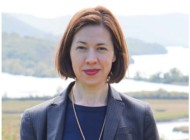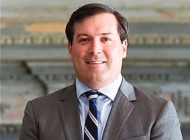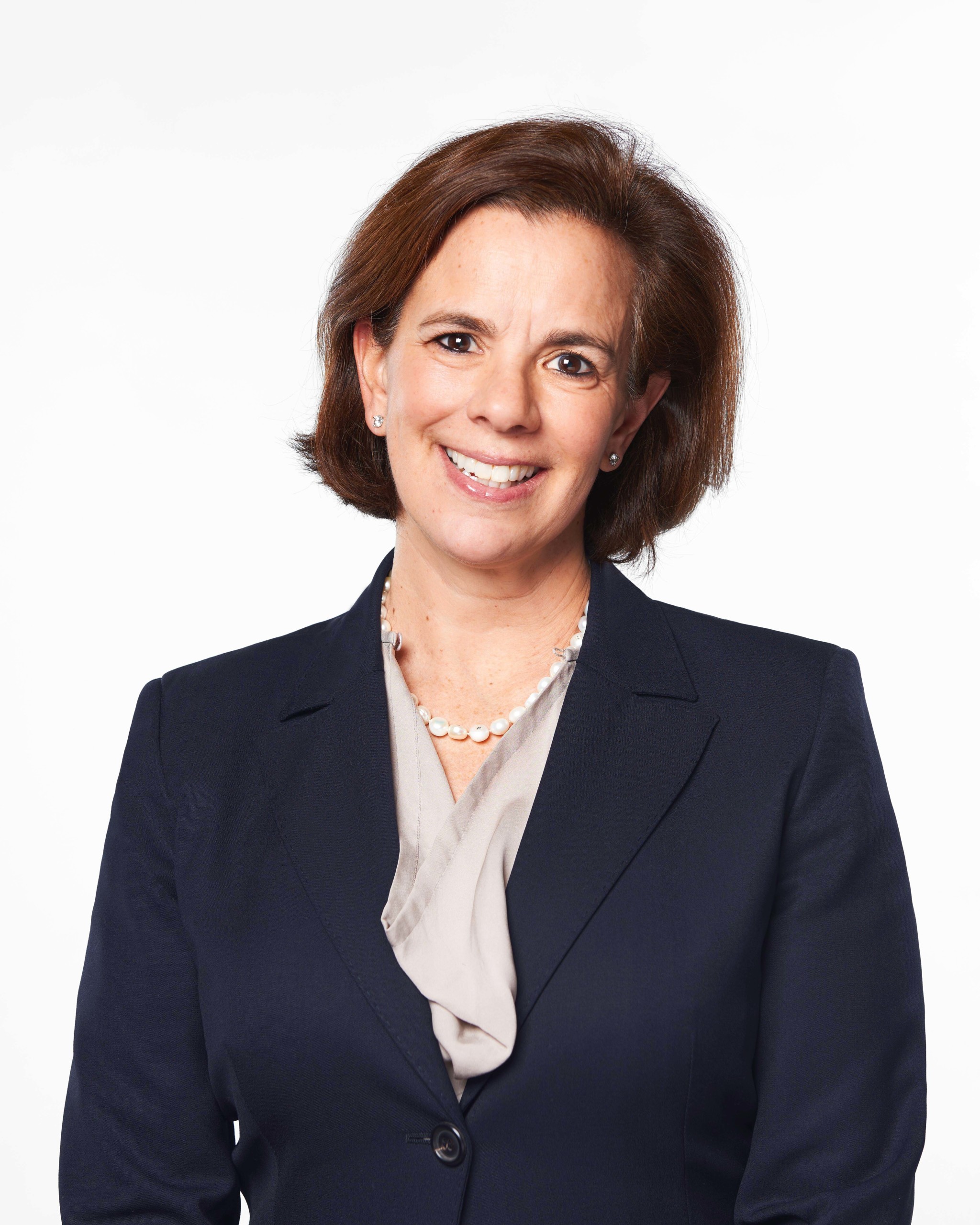
Alexandra A. Kirtley joined the Philadelphia Museum of Art in 2001. Since 2015, she has served as the museum’s Montgomery-Garvan curator of American decorative arts.
It would be hard to name a more energetic champion of the American decorative arts than Alexandra Alevizatos Kirtley. Since joining the Philadelphia Museum of Art 24 years ago, the museum’s Montgomery-Garvan curator of American decorative arts has cut a sharp profile in the field through her many books, articles, exhibitions and lectures on behalf of her institution and others, as well by her leadership roles in the Decorative Arts Trust, Andalusia Historic House, Gardens & Arboretum, the United States Senate Commission on Art, the Delaware Historical Society and the Museum of Early Southern Decorative Arts. Her curatorial contributions range from the exhibitions “Colonial Philadelphia Porcelain: The Art of Bonnin & Morris” in 2008 and “Classical Splendor: Painted Furniture for a Grand Philadelphia House” in 2016-17 to the catalog American Furniture 1650-1840: Highlights of the Philadelphia Museum of Art, published in 2020 and the first compendium of its kind. Now in her second year as curator of “Focus: Americana” at New York’s Winter Show, the Winterthur-trained expert, Baltimore native and soon-to-be empty-nester shares her thoughts on an evolving field and the changing marketplace.
You are again serving as guest curator of The Winter Show’s “Focus: Americana” booth. What does the
job entail?
The dealers’ amazing inventories make the exhibit’s installation dynamic. I have been busy over recent weeks sifting through their submissions — taking into consideration size, range, new-to-the-market material and placement – within my booth design. And even though as a museum curator I come from a different direction than dealers do, we have the same goal: share the best works of art and see them presented in the most engaging way. In a more general sense, everyone is enthused by what The Winter Show is promoting through the exhibit.
How do you manage the pressure of organizing “Focus: Americana” on a tight deadline?
Exhibitors began submitting photographs and descriptions to me in late summer. The submissions have been outstanding, and I’ve been full-swing into the process of laying out the installation and designing it with Erick Espinoza of Anthony Baratta, LLC. Naturally, when a dealer acquires something fabulous at the last minute, I do whatever I can to fit it in because, at the end of the day, the more excellent works of art we have in the booth, the better every dealer’s inventory looks.
Can you give us a sneak peek? Objects? Themes? Palette? Construction?
I am thrilled that Frank and Barbara Pollack’s gorgeous Winter Show booth architecture will again frame the stand. Like last year, I’m arranging works of art to create unexpected juxtapositions, showing the ability for whimsical folk art to set off the elegance of more formal works — and for more formal works to anchor an informal room or space. The dealers have submitted painted furniture, excellent weathervanes, fun small sculpture, some amazing paintings and decorative items, plus a fine selection of Elle Shushan’s portrait miniatures. We are reminded that it’s all about people — artists, artisans and owners.
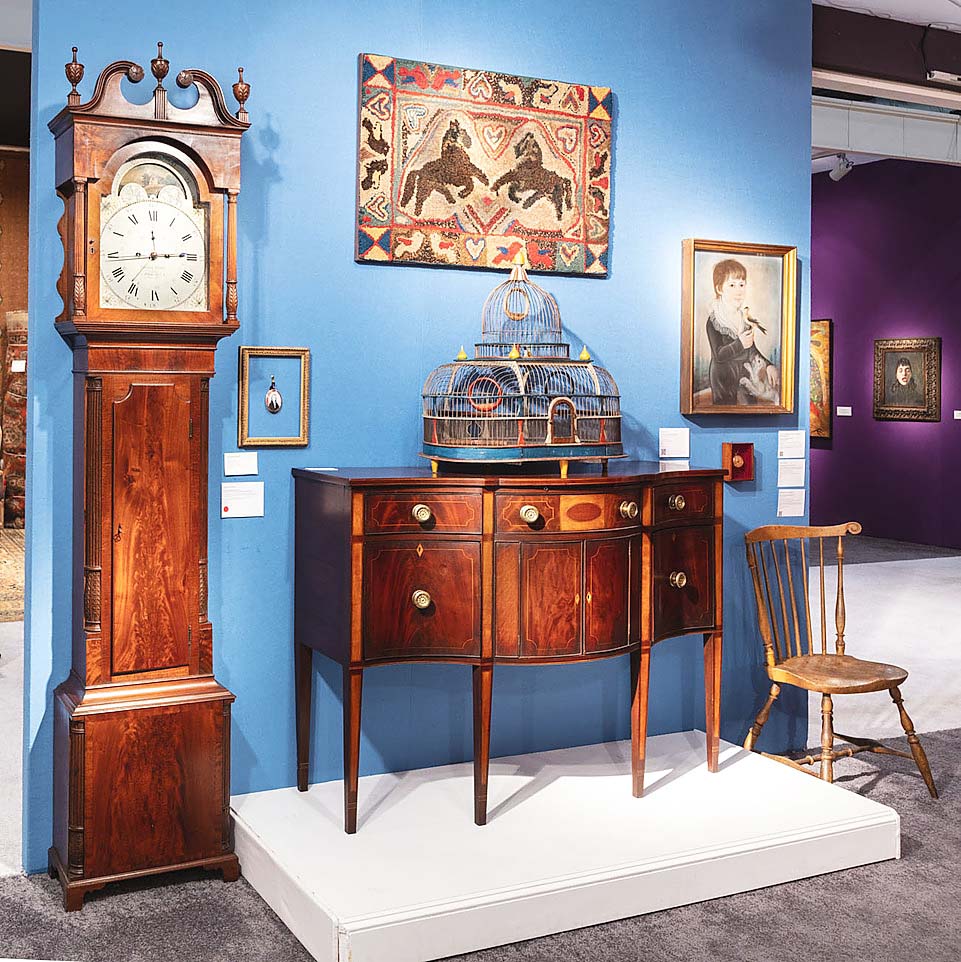
Kirtley is guest curator for the “Focus: Americana” booth at the 2025 Winter Show. Here, a view of her installation for the 2024 show.
As a curator at a major urban art museum, how do you honor historic collections while also acknowledging changing public attitudes and interests?
As institutions grow and move through time, they do not have to reinvent themselves but instead should lean on their core strengths. In the case of the Philadelphia Museum of Art (PMA), that means our deep and rich art collections. These collections have so many stories to tell, and new ones are being discovered every day even at the PMA, which has been collecting for almost 150 years — which is why I continue to dig into the PMA’s treasures. And while I love the volume of our collection, I do like to present sleek, clean galleries, so I rotate often. Honestly, for each piece of furniture on view in the American galleries there are several more I could present in its place. I do firmly believe that a curator should rotate, rotate, rotate to keep the permanent galleries fresh and alive. The practice keeps museum members and frequent visitors coming back to see what’s new. It keeps curators on their toes, too. I feel like I’ve only begun to tap into what we have at the PMA.
Are you saying the classics are forever?
Yes. Visitors enjoy seeing what has stood the test of time, and seeing them anew as different aspects of them are re-presented and highlighted or juxtaposed in unexpected ways with other collections. The online journal Hyper-Allergic this fall named “Siena: The Rise of Painting, 1300-1350,” on through January 26 at the Metropolitan Museum of Art in Manhattan, the most anticipated exhibition of season. These early Renaissance treasures have stood the test of time but are presented with all new insights and context. People love the show and are flocking to it.
Your ongoing interests and future projects?
I’m interested in reframing Philadelphia as an artistic center with a broader international flavor than has typically been ascribed to it. We have presented the impact of free and enslaved African artisans, and we should also now highlight Spanish, Portuguese, Italian and French influences that are quite pronounced in Philadelphia. We need to ask how the melding of cultures created the much-loved Philadelphia paradigm. One example is carver Martin Jugiez, who was born in Portugal but trained in France with Nicholas Bernard. They came to Philadelphia via London. Bernard’s sister married a Frenchman who lived in Lancaster, Penn. We also have carver Claudius LeGrand and upholsterer George Bertault. Anthony Quervelle trained in Versailles, France, where his uncle had been the cabinetmaker to King Louis XVI and Queen Marie Antoinette at Versailles. I hope to continually infuse our galleries with the visual evidence of new research. With the 250th anniversary of the signing of the Declaration of Independence fast approaching in 2026, we are working on exciting plans for our first-floor galleries (1700 to 1840s) as well as aiming for the opening of our reinstalled second-floor galleries (1850s onwards). More to come on that — so stay tuned!
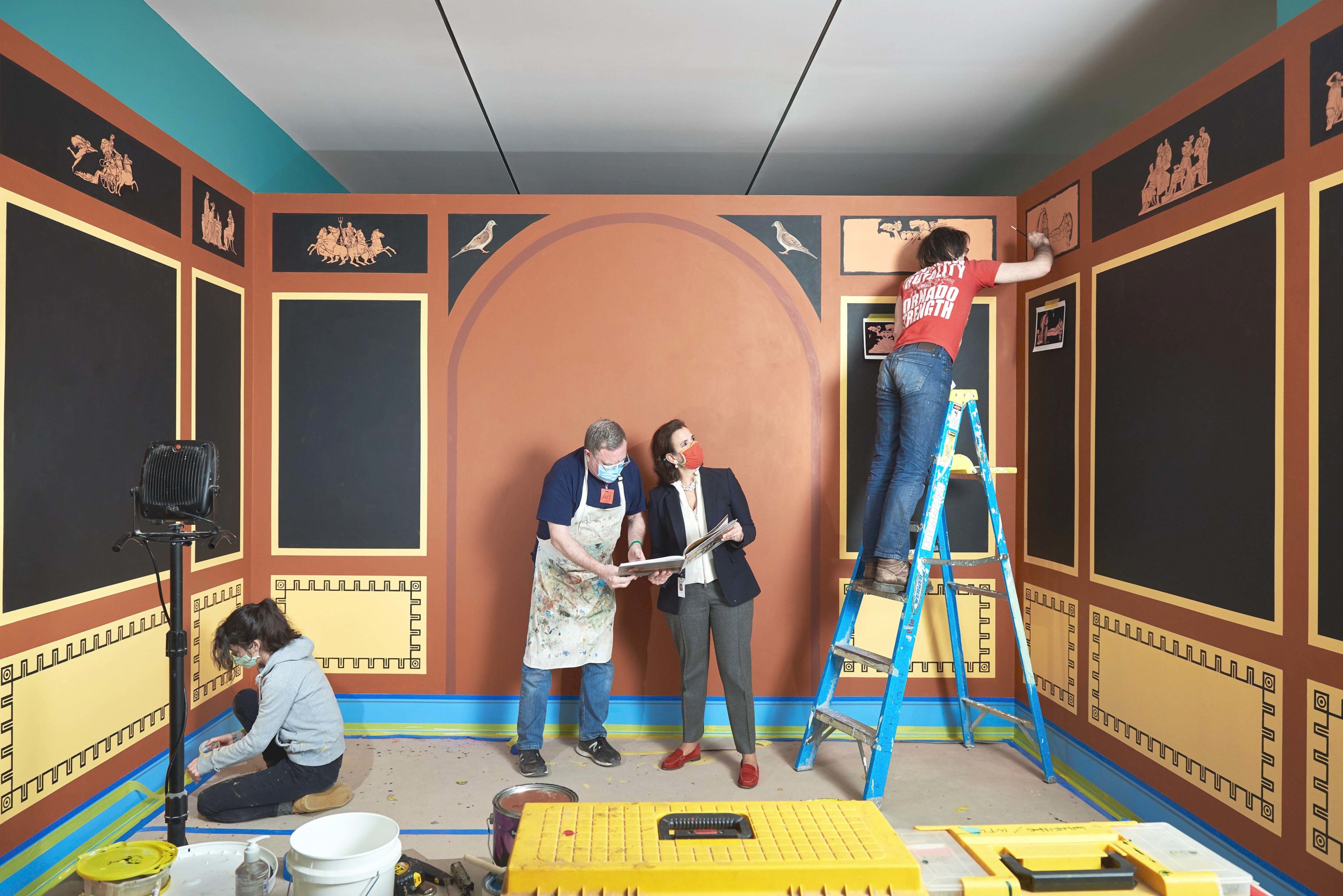
Kirtley, center, co-curated the popular 2016-17 exhibition “Classical Splendor: Painted Furniture for a Grand Philadelphia House” at the Philadelphia Museum of Art.
What programs might we expect at the Philadelphia Show in April 2025?
Huntley Platt manages the Philadelphia Show on behalf of the PMA’s Women’s Committee. The impetus for the show’s programming comes from these tireless volunteers. Leading up to the show, the PMA will screen the documentary “Harry Bertoia: Master of Metal,” followed by a discussion with Celia Bertoia. Huntley is also working on a program with Dan Wheeler, who restored A Man Full of Trouble, the 1759 Society Hill tavern. The exhibition in the Dorrance galleries will be “Boom: Art and Design in the 1940s,” from the PMA’s permanent collection. Since I have done a lot of work on our American frames, I am looking forward to “Framed! European Picture Frames from the Johnson Collection,” which will be on view in the third-floor galleries near the American period rooms.
As an officer of the Decorative Arts Trust, what accomplishments most impress you?
I’ve been a board member since 2013 and have watched with pride as executive director Matthew Thurlow, who interned with me in 2003, has transformed the organization. Trust symposia, lectures, sojourns and study trips abroad are engaging more and more people interested in decorative arts, architecture, landscape and the fine arts. With the funds raised, we support curatorial positions and make research, publications and exhibition awards that are now crucial to our field. Most importantly, fellowship among members — collectors, curators and students alike — makes Trust events lively. Everyone is engaged and brings excellent perspectives to the ways in which we can advance the field.
And Andalusia, in Bucks County?
I’ve been on Andalusia’s board since Jimmy Biddle died in 2005. With the very able leadership of his son Jamie Biddle, the foundation maintains a historic house, gardens and an arboretum. Our inaugural director retired several years ago, and we are now flourishing in new ways under executive director John Vick, who came to Andalusia from the Philadelphia Museum of Art. Thomas U. Walter’s colonnaded façade of the house is an icon of Classical American architecture, and the earlier Henry Latrobe front provides a nice preamble to it. We continue to acquire Craig and Biddle family material to keep the story dynamic, but people also flock to Andalusia to bask in its physical environment: its landscape. Andalusia is the only American partner organization of the UK’s Royal Horticultural Society. We were just recognized by the RHS as international partner of the year.
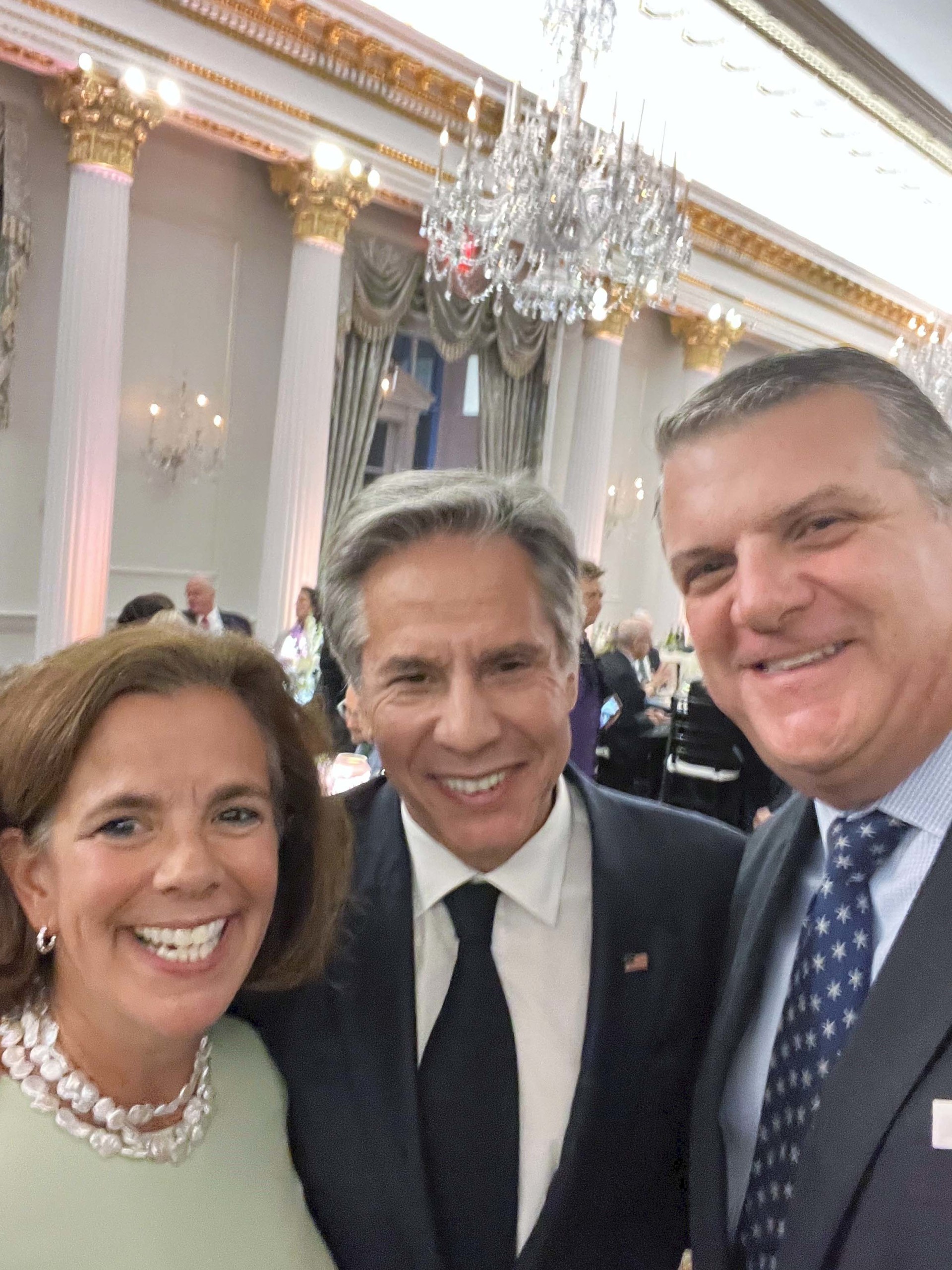
Alexandra, who serves on the curatorial advisory board of the United States Senate Commission on Art, and Roger Kirtley with US Secretary of State Antony Blinken, center.
You and your husband, Roger, will soon be empty-nesters. With your youngest child, Henry, leaving for college next fall, how is your life changing?
Oh, wow. It seems impossible that these years have flown by so fast. Everyone in the field has been so gracious to me as a working mother and more importantly to my children — colleagues have become friends with them and shared their knowledge. Our daughter, Caroline, wrote a provocative article in The Magazine ANTIQUES (“Personal space: A Teenager Talks about Art Appreciation,” March 2021) chronicling her adventures in the art and antiques world. She is now an art history major at Sewanee in Tennessee. Henry interned at the Audrain Automobile Museum in Newport, R.I. An award-winning football long-snapper, lacrosse player and lead in Mamma Mia, Henry also participates in the antiques dealers’ Fantasy Football league. I continue to travel. Hopefully Roger — who sidelines as lead guitar and vocals in a local rock cover band and is the chair of the board of Wilmington’s Grand Opera House — will join me more often. Last fall, I took part in an Attingham Trust course in France, held at châteaux in and around Paris, such as Versailles, the Louvre, Compiègne and Chantilly. The program caught my eye because of my interest in French Philadelphia. Roger and I were in Italy the week after the 2024 Delaware Antiques Show to visit Caroline, an equestrienne who is studying in Florence, without her horse! Henry plans to be in Newport this summer. Roger and I look forward to spending time there, too. When school opens next fall, look for Roger and me to be back to doing yoga, playing more tennis, watching more live music and for me to caddy for Roger on the golf course.
–Laura Beach

